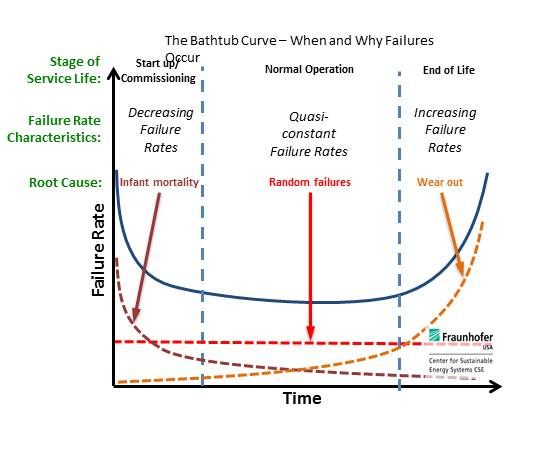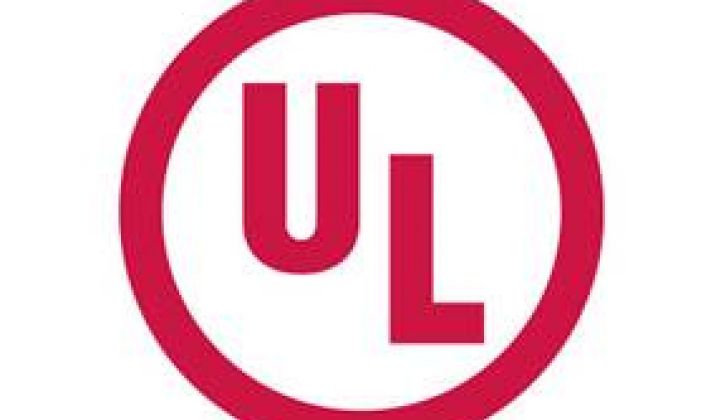Underwriters Laboratories' 1703 Standard for Flat-Plate Photovoltaic Modules and Panels is the industry standard for baseline safety and performance and the gateway to the marketplace.
“UL 1703 is not only the gold standard for safety in the U.S., it is the basis for the IEC 61730 document which is the international safety standard,” explained UL Renewable Energy Principal Engineer Christopher Flueckiger.
The 1703 standard was developed by UL in the 1980s and has been through three editions, Flueckiger said. “UL took the lead on addressing the safety issues and worked with other organizations to pull 1703 together.”
“But we are not limited to just the basics,” added UL Energy Business Development Director Evelyn Butler. UL now certifies to international IEC performance standards (61215 and 61646) and, along with the rest of the solar industry, “is thinking about durability and reliability and how they affect bankability,” Butler said.
“For a completely new investigation of a manufacturer’s new model design, our cost would be $35,000 to $45,000,” Butler said. “If they have multiple variations they want tested at the same time, it would increase the price. But we don’t have a multiplier. We try to come up with a cost-effective price.”
With industry consolidation and the decreasing number of manufacturers, she added, “we see less new module testing. But because of the trend toward cost efficiency, we see a lot of retesting, where manufacturers have tweaked a design. Retesting [prices] could be as low as $2,000 or as high as the full price, depending on what is tested.”
“Depending on your design, nine to twelve samples would be adequate to go through the testing,” Flueckiger said. “When you send in modules, they go through each of the 1703 tests, but only following a review of the construction requirements.” Components and materials in everything from the frame and junction box to the connectors and wiring are evaluated.
UL 1703 testing looks for potential causes of “three basic hazards: mechanical, electrical or fire hazards,” Flueckiger said. “Three modules go through each of the test sequences.”
The temperature cycling sequence takes 1,000 hours. The humidity-freeze sequence takes about ten days. “Those we call our environmental tests,” Flueckiger said. “They are the two major tests. Then we do temperature tests to make sure that under normal operating conditions the module materials don’t degrade or break down.”
UL also checks that the module “will function under open circuit, short circuit and normal operating conditions and under shaded cell conditions,” Flueckiger went on. “We also do testing for exposure to rain and water. We do fire testing if [the module will be] installed on a building.”
They do corrosive atmosphere testing of the frames, electrical connections and wiring and tests of the laminate integrity, and “voltage and current measurements to verify the ratings on the manufacturer’s label are safe,” Flueckiger said.
“We test hot-spot conditions by introducing opaque shading on a module and cycle that 100 times to make sure there is no arc, because when you shade a cell, the cell becomes a toaster. Instead of producing power, it consumes power and gets hot.”
At the end of a module’s life, “because it is a DC device, it could get to an open circuit condition where there is also the possibility of forming an electrical arc. A lot of our testing is for how well the module’s design withstands those conditions that would lead to arcing. If an arc forms, it will melt the glass, it will melt the frame, it will melt the cell.”
UL also tests to see that the module, frame and mounting can withstand wind and snow loads. And they test for installer error with “cut tests and push tests.”
Recently, Butler said, “We’ve been asked by our customers to try to understand durability and reliability tests from which we have started to develop ideas about long-term service and lifetime predictions.”

“If you look at failure rates over the lifetime of a product, a PV module follows the bathtub curve,” Flueckiger said. But there is not yet a scientific basis to go beyond the bathtub curve’s first vertical line. The UL 1703 tests are all about so-called infant mortality. “Even if we look at the performance standards,” he said, “we are still talking infant levels of performance and not beyond.”
Tests for the horizontal line and second vertical line in the bathtub curve “don’t exist in the industry today,” said Flueckiger, who leads a group in NREL’s International PV Module Quality Assurance Forum which is working to establish consensus on such testing. “There are no agreed-on predictive tests.”
UL has done tests for manufacturers that go beyond current protocols with many times more hours of cycling, Butler said, adding, “Then they start to understand how to adjust their design to get better performance and less degradation.”
“The approach we take is technical and scientific,” Flueckiger said. “We don’t like just swinging a bigger hammer. But if a customer wants that, we will do it.”
“Most of the industry knows we offer more than the typical testing and certification,” Butler said. “But we don’t have an official bankability program. We decided very specifically not to develop that because we wanted to respect the work being done by the international community to create international protocols. We didn’t want to say we know exactly what is necessary to predict service lifetime. We know we don’t have the science for that.”
***
This article is part of a GTM series on panel testing which includes:



